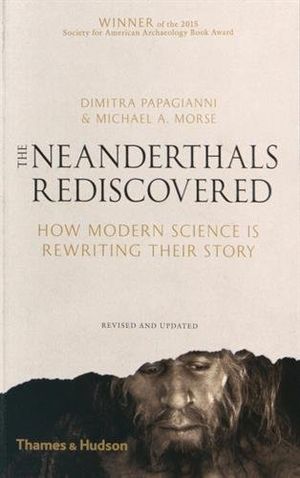Did Neanderthals Die Out Because of the Paleo Diet?
A new theory links their fate to a meat-heavy regimen
:focal(581x137:582x138)/https://tf-cmsv2-smithsonianmag-media.s3.amazonaws.com/filer/65/72/6572fb82-b297-4eee-8e6d-5f337ed193d5/jun2016_e02_phenom-wr-v1.jpg)
Humans tend to dismiss Neanderthals as dimwits, yet the brains of our doomed cousins were actually larger than our own. “If you go to a site from 150,000 years ago,” says Miki Ben-Dor, a Tel Aviv University archaeologist, “you won’t be able to tell whether Neanderthals or Homo sapiens lived there, because they had all the same tools.” Which helps explain why, to fathom how our fates diverged, he recently scrutinized Neanderthals’ bodies instead of their skulls.
While humans have barrel-shaped chests and narrow pelvises, Neanderthals had bell-shaped torsos with wide pelvises. The prevailing explanation has been that Neanderthals, often living in colder and drier environments than their human contemporaries, needed more energy and therefore more oxygen, so their torsos swelled to hold a bigger respiratory system.
But Ben-Dor had a gut feeling this was wrong. What if the difference was what they ate? Living in Eurasia 300,000 to 30,000 years ago, Neanderthals settled in places like the Polar Urals and southern Siberia—not bountiful in the best of times, and certainly not during ice ages. In the heart of a tundra winter, with no fruits and veggies to be found, animal meat—made of fat and protein—was likely the only energy source.
Alas, though fat is easier to digest, it’s scarce in cold conditions, as prey animals themselves burn up their fat stores and grow lean. So Neanderthals must have eaten a great deal of protein, which is tough to metabolize and puts heavy demands on the liver and kidneys to remove toxic byproducts. In fact, we humans have a “protein ceiling” of between 35 and 50 percent of our diet; eating too much more can be dangerous. Ben-Dor thinks that Neanderthals’ bodies found a way to utilize more protein, developing enlarged livers and kidneys, and chests and pelvises that widened over the millennia to accommodate these beefed-up organs.
For confirmation of his theory, Ben-Dor looks to today’s Inuit peoples, who live in northern climes, subsist at times on an all-meat diet and have larger livers and kidneys and longer ribs than average Europeans.
To cope with the fat famine, Neanderthals probably also specialized in hunting gigantic animals like mammoths, which retain fat longer in poor conditions, and require greater strength but less energy and speed to kill. (Mammoths don’t run away, and you only have to kill one to feast for months.)
But as these mega-beasts vanished, the burly Neanderthals likely struggled to chase down smaller, swifter prey. Meanwhile, humans, with our narrow pelvises and agile forms, scampered into the future.
Related Reads

The Neanderthals Rediscovered: How Modern Science Is Rewriting Their Story